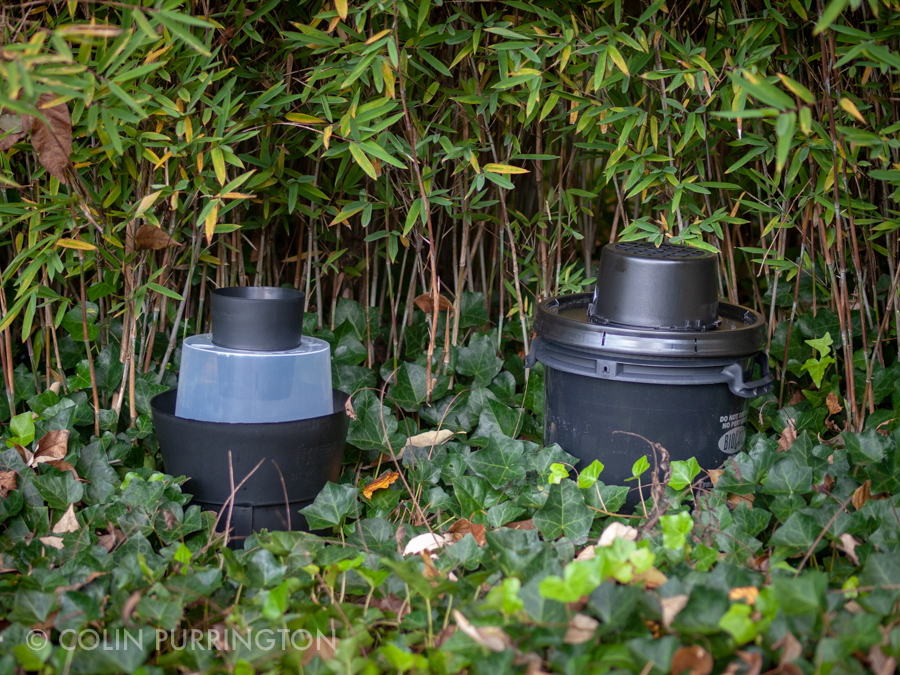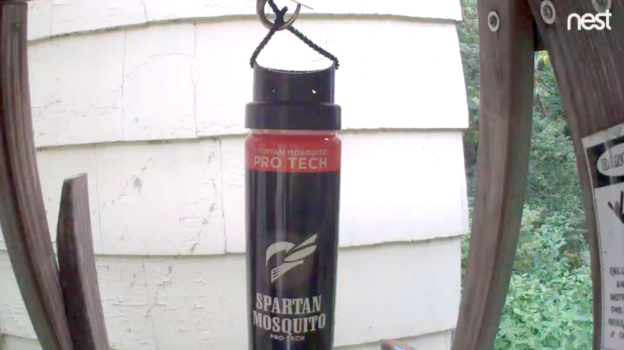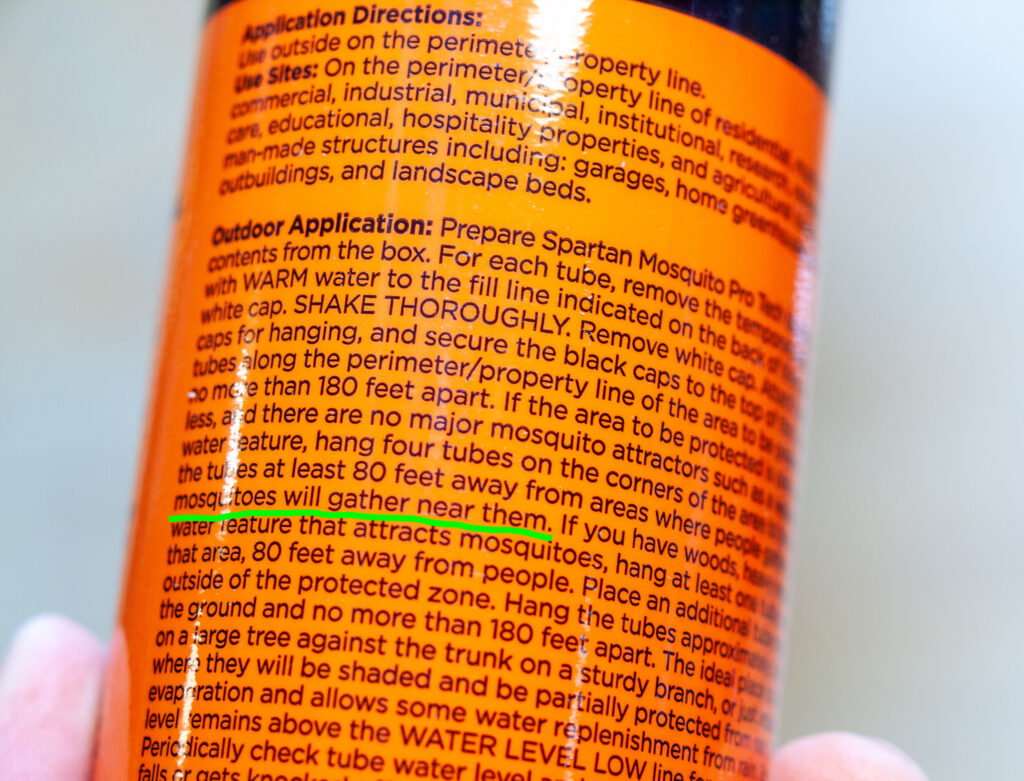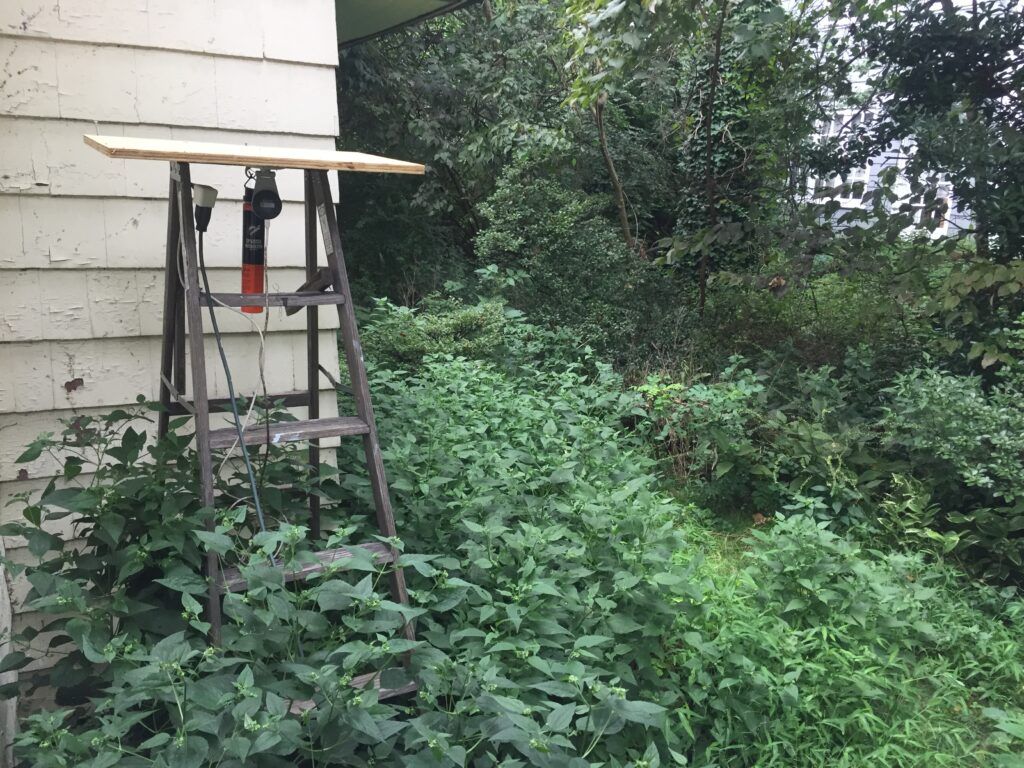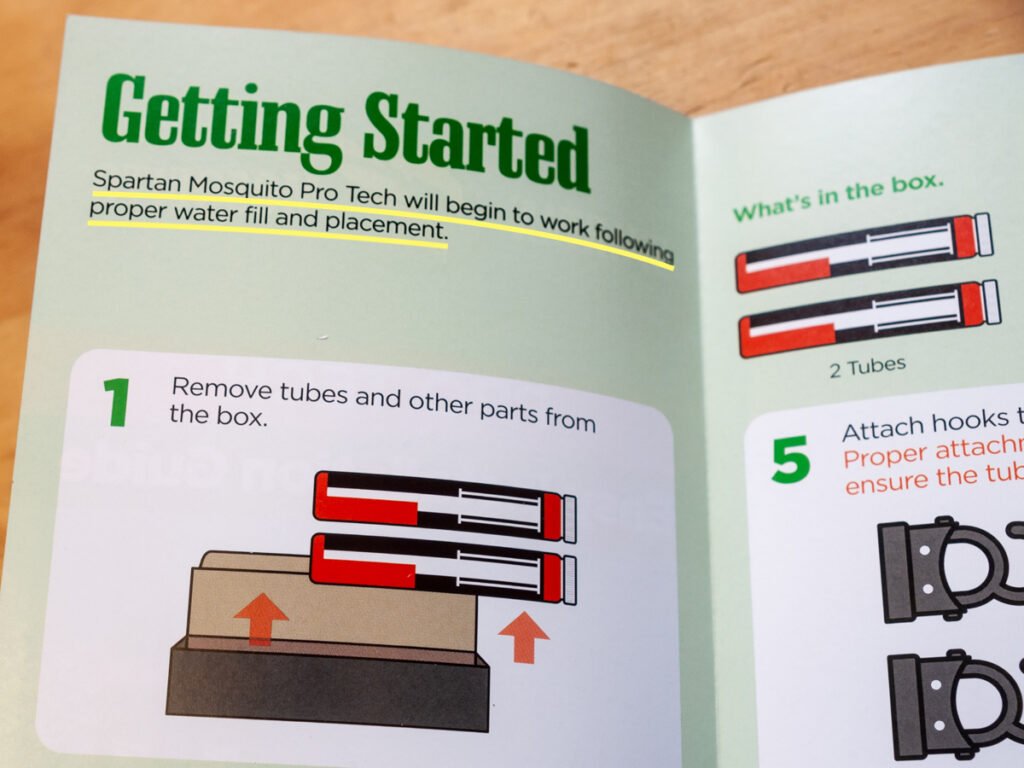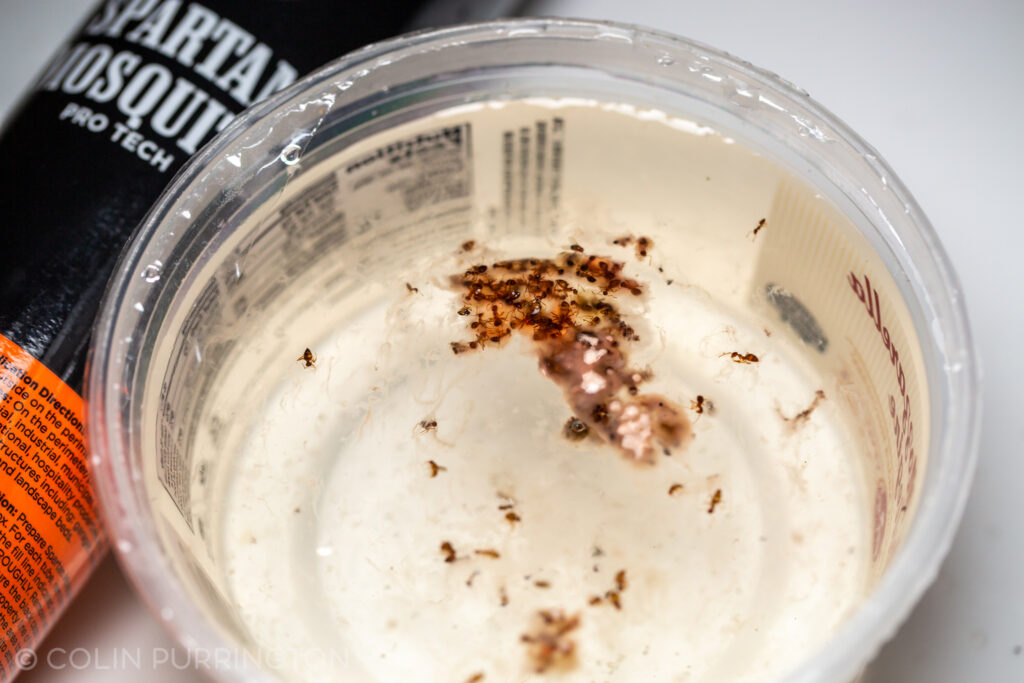An easy way to kill thousands of mosquitoes each summer is to drop some Bacillus thuringiensis israelensis (abbreviated to “Bti”) into containers filled with stagnant water. The photograph below shows one fashioned out of a litter box, but any large container will work. Then just lob in a Mosquito Dunk (made by Summit) or any equivalent product that contains live Bti spores, and repeat every three weeks so that there is a fresh supply of bacteria. Over the summer months, hundreds or thousands of females will find the container and oviposit onto the water surface as well as any objects such as wood and terracotta pots placed inside. When the larvae begin to feed they’ll be killed by the toxins produced by the bacteria.
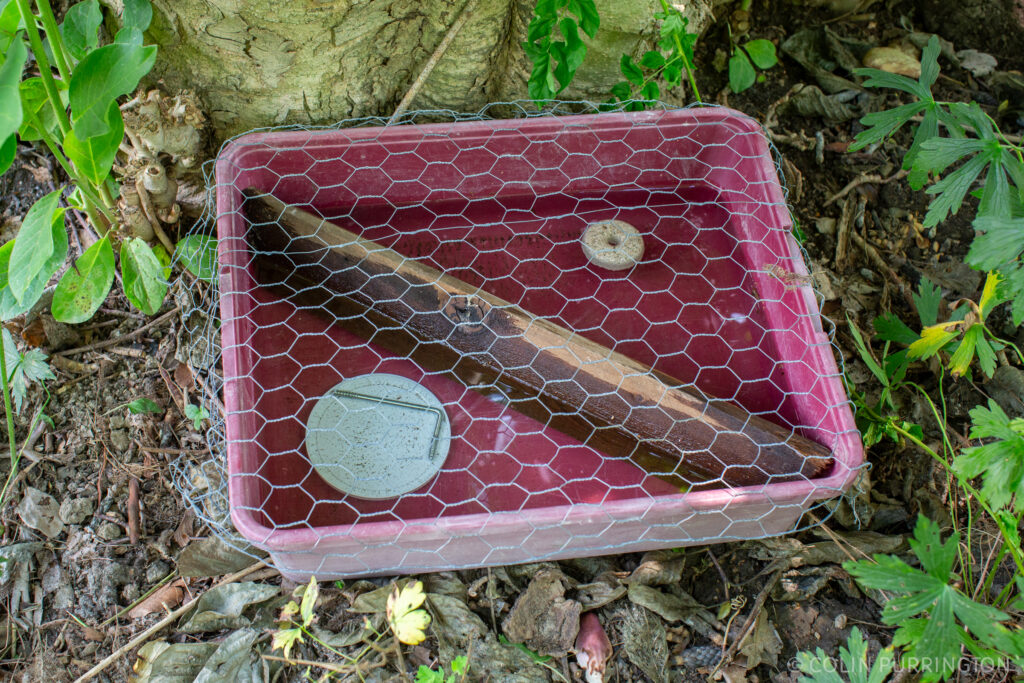
Tips
As you can see from the photograph, I’ve covered the container with chicken wire. This prevents birds from drowning but also serves to prevent dogs, foxes, deer, and raccoons from draining the water, which they do quickly in my yard.
To increase the attractiveness of the water, add a handful of leaves or grass, which decompose but emit distinctive volatiles (not CO2, fyi) that attract gravid females.
I’ve also added a board that is partially submerged so that Asian tiger mosquitoes have something wet and rough to oviposit onto (they don’t oviposit onto the water’s surface like many other species). I set the board at an angle so innocent insects might be able to climb up out of the water when they fall in. Terracotta pots are another excellent option because the entire surface stays hydrated, something that mosquitoes love. Even some dry leaves floating on the surface will do the trick.
Finally, I recommend adding some sort of white object (like a yoghurt lid weighted down with a rock) that allows you to easily view larvae wriggling around; if you see them you need to add a fresh Mosquito Dunk or equivalent.
When siting your honeypots (the more the better) opt for locations that don’t get direct sunlight, are near vegetation, and are at the bases of larger trees. And it’s totally OK and even preferable to have each of your honeypots set up in a different way. E.g., if you live in an area with yellow-fever mosquitoes (Aedes aegypti), add some salt (0.25%) to increase oviposition rates. And other species of mosquitoes like large amounts of rotting vegetation. Your yard has dozens of different mosquito species so the trick is to identify your problem species and then design a honeypot that attracts them best.
PRO-TIP: If you don’t mind eye-sores in your yard, use tires. Asian tiger mosquitoes go bonkers for them. For slightly prettier traps you can cut tires apart and make ovillantas (“egg tires”). Smithsonian Magazine has a nice overview of these traps (just swap in Bti instead of the pesticide). You’ll need a Sawzall-type tool to cut through tires with metal reinforcements.
Purge your yard of standing water
Bti honeypot traps won’t do a thing if mosquitoes have plenty of other sites where they can dump their eggs. So get rid of all the objects that are accumulating water: kid toys, plastic tarps, saucers under plant pots, etc. And make especially sure that your gutters are free of clogs. If you’d like a visual guide to the places that accumulate water, see this page. The success of Bti honeypot traps will also be improved if you can somehow get your neighbors invested in removing their stagnant water, too. One trick for getting neighbors on board is to make sure one of yours is highly visible when you have people over for dinner. When they ask what that is, have one ready to gift them. The more neighbors participating, the better.
Are they working?
To determine whether mosquitoes are ovipositing, just look for egg rafts on the surface of the water. Eggs from Asian tiger mosquitoes (Aedes albopictus) are oviposited singly or in small groupings on the edges of the container or on pieces of wood. If there are eggs and no larvae, the Bti is doing its thing.
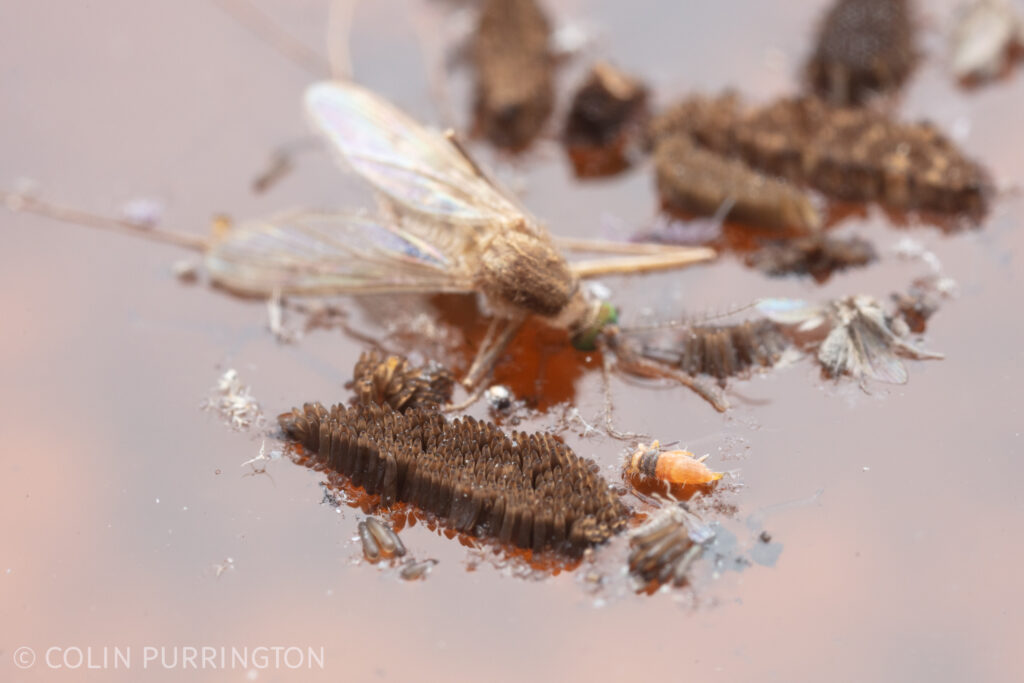
Warning
After a few weeks the bacteria will die off, so you have to keep adding new Bti throughout the summer, approximately every three weeks. But as mentioned above I think it is a good habit to glance at your containers every several days to confirm that the Bti is doing its thing. If you are not vigilant about refreshing the Bti all those containers will start pumping thousands of mosquitoes into your yard every week and your neighbors with loathe you if they don’t already. So if you like to start projects but not maintain them, Bti honeypots are not for you. Here’s what mosquito larvae look like:
Are they safe?
Bti toxins are completely nontoxic to mammals, birds, and all insects except mosquitoes, black flies, and fungus gnats. For an excellent overview of the mode of action and safety, please see this report (PDF).
Sources of Bti
- Biosolutions Bactive (Amazon: 1 lb)
- Bonide Mosquito Beater Water Soluble Pouches (Amazon: 24 count)
- Bactimos mosquito dunks (Amazon: 20 count, 100 count)
- Summit Mosquito Dunk (Amazon: 6 count, 20 count, 100 count)
- Terro Mosquito Larvacide Pouches (Amazon: 10 count)
- VectoBac Water Dispersible Granule (Forestry Distributing: 40 lbs)
Other sites with similar information
- Blue Duck Lawn Care (Tiktok)
- Doug Tallamy (YouTube)
- Jocelyn in Florida (Instagram video)
- My Green Montgomery
- Native Nurseries
- Northern Virginia Bird Alliance
- Popular Science
- Sidewalk Nature
- The Ever Hopeful Gardener (Tiktok)
- The Garbage Queen, UPDATE (Tiktok)
- WAMU (YouTube)
Killing adult mosquitoes
If you also want to kill adult mosquitoes, please see my post on autocidal gravid ovitraps. Several companies sell them but you can make your own. I own a half-dozen of these traps AND a similar number of Bti honeytraps.
